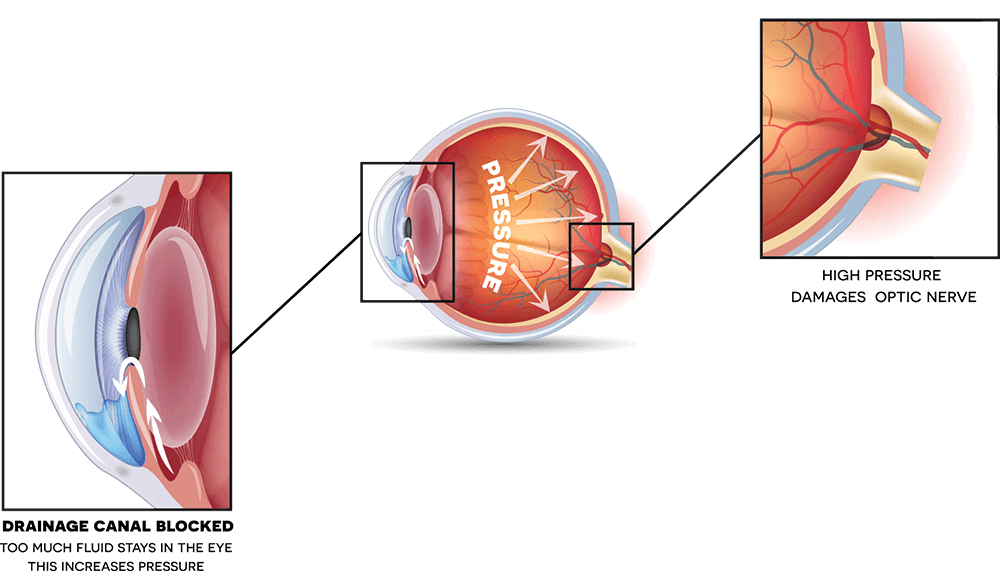Glaucoma is a degenerative disease of the optic nerve that if left untreated can cause permanent damage to the optic nerve resulting in gradual vision loss and eventual blindness. Damage to the optic nerve, due to glaucoma, is frequently associated with elevated pressure (IOP) inside the eye. Clear fluid, called aqueous humor circulates through the eye providing nourishment to the tissues.

Aqueous humor flows out of the eye through the Trabecular Meshwork (TM), near the edge of the iris. If the TM is blocked or damaged the pressure inside the eye increases. This elevated pressure results in damage to the optic nerve and vision loss occur. Open-Angle Glaucoma (OAG), occurs when there is an increase in fluid production or a decrease in fluid drainage. Over time, as the optic nerve fibers are damaged and peripheral (side) vision is lost. Without proper treatment, the central vision is lost as well.
Developing glaucoma increases if you:
- Are African American or Hispanic
- Have a relative with glaucoma
- Are diabetic
- Are very nearsighted
- Are over 35 years of age
- Are on steroids
- Have had an injury or surgery to the eyes
Glaucoma can occur in people of all races at any age.
